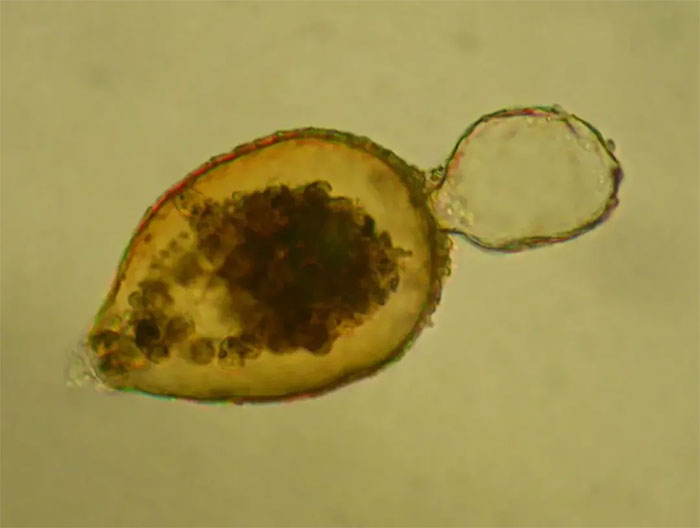In 2018, Yang Hao – a researcher searching for cosmic dust in seabed sediment collected from the Mariana Trench. Reaching the deepest part of the ocean, he hoped to gain a better understanding of the origins of life on Earth and the role of interstellar material.
While hunting for meteorite dust, Yang was astonished to discover a shelled organism caught in his equipment. It was a vertebrate species known as Resigella bilocularis. Similar to other foraminifera, R. bilocularis is a unicellular organism, but unlike most foraminifera found on the ocean floor, this species contained something that left Yang utterly amazed: magnetism. Excited by his discovery, Yang decided to dedicate all his efforts to understanding everything related to this mysterious organism.

Resigella bilocularis under the microscope.
Many organisms, such as bacteria, unicellular algae, insects, mollusks, fish, birds, and even mammals, exhibit magnetic affinity. This ability is believed to stem from magnetite minerals that these species use to orient themselves and adjust their behavior according to the Earth’s magnetic field. Some organisms can produce magnetite by utilizing iron from their surrounding environment. However, for many species, such as foraminifera and other eukaryotes, the origin of magnetite remains a mystery.
Regarding his research, Yang and his team suspect that R. bilocularis has produced its own magnetic material. If this is the case, R. bilocularis would be the first eukaryotic unicellular organism found deep in the ocean to exhibit magnetism. Further investigation into this species’ magnetism could bring researchers closer to understanding the evolutionary history of similar organisms.
Scientists formulated this hypothesis after analyzing 1,000 foraminifera samples collected from the Mariana Trench during expeditions from 2016 to 2019. Their work revealed that the chemical and physical structure of magnetite in R. bilocularis differs from that in the surrounding sediments, suggesting that foraminifera have synthesized these substances themselves.
Despite the challenges of studying foraminifera in a laboratory designed for unicellular organisms living under pressure 1,000 times greater than sea level, Yang remains determined to execute his plan. He is working diligently to keep the foraminifera alive in the lab and to sequence the genome of this organism. If successful, what Yang and his colleagues contribute to the field of biology could be monumental.
Resigella bilocularis reacting when exposed to a magnetic field
M. Renee Bellinger, an evolutionary biologist at the University of Hawai‘i in Hilo, who was not involved in the research, commented: “The phenomenon of self-producing magnetite in species is very rare, especially in eukaryotic unicellular organisms. Studying deep-sea organisms with ancient origins can help us understand how the ability to produce magnetite has developed.”
Although Yang has not yet deciphered the cosmic origins of life on Earth, he may be getting closer to understanding the origins of life through magnetism.


















































